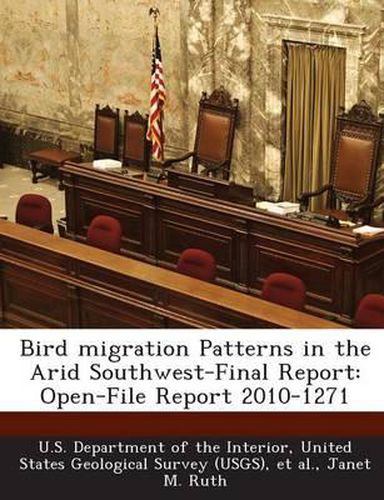Readings Newsletter
Become a Readings Member to make your shopping experience even easier.
Sign in or sign up for free!
You’re not far away from qualifying for FREE standard shipping within Australia
You’ve qualified for FREE standard shipping within Australia
The cart is loading…






To ensure full life-cycle conservation, we need to understand migrant behavior en route and how migrating species use stopover and migration aerohabitats. In the Southwest, birds traverse arid and mountainous landscapes in migration. Migrants are known to use riparian stopover habitats; we know less about how migrant density varies across the Southwest seasonally and annually, and how migrants use other habitat types during migratory stopover. Furthermore, we lack information about migrant flight altitudes, speeds, and directions of travel, and how these patterns vary seasonally and annually across the Southwest. Using weather surveillance radar data, we identified targets likely dominated by nocturnally migrating birds and determined their flight altitudes, speeds, directions over ground, and variations in abundance. Migrating or foraging bats likely are present across the region in some of these data, particularly in central Texas. We found that migrants flew at significantly lower altitudes and significantly higher speeds in spring than in fall. In all seasons migrants maintained seasonally appropriate directions of movement. We detected significant differences in vertical structure of migrant densities that varied both geographically within seasons and seasonally within sites. We also found that in fall there was a greater and more variable passage of migrants through the central part of the borderlands (New Mexico and west Texas); in spring there was some suggestion of greater and more variable passage of migrants in the eastern borderlands (central and south Texas). Such patterns are consistent with the existence of at least two migration systems through western North America and the use of different migration routes in spring and fall for at least some species. Using radar data and satellite land cover data, we determined the habitats with which migrants are associated during migration stopover. There were significant differences in bird densities among habi
$9.00 standard shipping within Australia
FREE standard shipping within Australia for orders over $100.00
Express & International shipping calculated at checkout
To ensure full life-cycle conservation, we need to understand migrant behavior en route and how migrating species use stopover and migration aerohabitats. In the Southwest, birds traverse arid and mountainous landscapes in migration. Migrants are known to use riparian stopover habitats; we know less about how migrant density varies across the Southwest seasonally and annually, and how migrants use other habitat types during migratory stopover. Furthermore, we lack information about migrant flight altitudes, speeds, and directions of travel, and how these patterns vary seasonally and annually across the Southwest. Using weather surveillance radar data, we identified targets likely dominated by nocturnally migrating birds and determined their flight altitudes, speeds, directions over ground, and variations in abundance. Migrating or foraging bats likely are present across the region in some of these data, particularly in central Texas. We found that migrants flew at significantly lower altitudes and significantly higher speeds in spring than in fall. In all seasons migrants maintained seasonally appropriate directions of movement. We detected significant differences in vertical structure of migrant densities that varied both geographically within seasons and seasonally within sites. We also found that in fall there was a greater and more variable passage of migrants through the central part of the borderlands (New Mexico and west Texas); in spring there was some suggestion of greater and more variable passage of migrants in the eastern borderlands (central and south Texas). Such patterns are consistent with the existence of at least two migration systems through western North America and the use of different migration routes in spring and fall for at least some species. Using radar data and satellite land cover data, we determined the habitats with which migrants are associated during migration stopover. There were significant differences in bird densities among habi